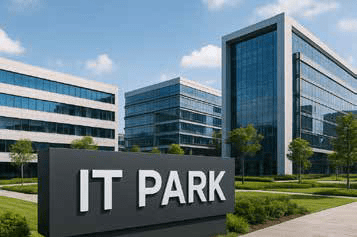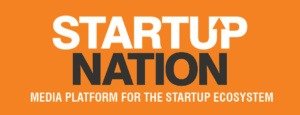
With higher FAR and fresh incentives, Verna gears up for a tech revolution
Goa’s industrial landscape is preparing for a major transformation with the Goa Industrial Development Corporation (GIDC) taking a decisive step to reshape the state’s economic future. In a landmark step, GIDC has approved the doubling of the Floor Area Ratio (FAR) from 150 to 300 for its upcoming IT Park at Verna Industrial Estate. The project, called Hello World, is spread across more than 4 lakh square metres and is envisioned as Goa’s first dedicated hub for Information Technology (IT) and IT-enabled Services (ITES).
The FAR increase is being described as a game-changer. FAR essentially determines how much built-up space can
be constructed on a plot of land. By doubling it, GIDC has made the project financially attractive for developers and operationally viable for companies. According to officials, this decision is not just about allowing taller buildings but about creating a modern, efficient ecosystem that can put Goa on the radar of global IT investors. In a state where land is scarce and industrial estates are reaching their limits, vertical expansion is being positioned as the only sustainable option. Urban planners argue that this approach allows better utilisation of land, provides economies of scale for developers and creates the kind of density that high-value industries like IT expect. Similar strategies have been successfully adopted in cities such as Bengaluru, Hyderabad and Pune, which today dominate India’s IT landscape. GIDC’s decision is also in line with the Goa Land Development and Building Construction (Amendment) Regulations, 2024, which permit relaxations in FAR for GIDC projects with government approval.
The Hello World master plan reflects a comprehensive vision for the IT park. It earmarks seven large plots of 25,000 square metres each to be auctioned to IT and ITES companies. There is also a dedicated plot for employee accommodation, designed to foster a live-work ecosystem and another reserved for a starred hotel that will serve business travellers, corporate clients and visiting professionals. To bring the project to life, GIDC will appoint a consultant at an estimated cost of `45 lakh. The consultant will prepare the master plan and facilitate approvals from the Town and Country Planning Department and the Directorate of Fire and Emergency Services. By streamlining compliance, GIDC hopes to prevent the delays that have plagued earlier projects.
Goa’s attempts to establish itself as an IT destination have faced several hurdles in the past. The much publicised Electronics Manufacturing Cluster (EMC) at Tuem has been delayed repeatedly and remains incomplete. Earlier IT parks proposed at Chimbel and Porvorim failed to move beyond the planning stage. Industry observers note that this time the choice of Verna gives the project a stronger foundation. Verna Industrial Estate is already the largest and most developed in Goa, strategically located with access to highways, the airport and the port. Anchoring the IT park in such an established location provides credibility and infrastructure support that earlier proposals lacked.
To ensure that Hello World is attractive to investors, GIDC has rolled out a special scheme that includes regulatory and financial incentives, transparent land allotment through auction and a dedicated promotional campaign to position Goa as an IT friendly state. Experts believe that these incentives, coupled with the FAR relaxation, will finally make Goa competitive in the IT and ITES space. Goa has long been known primarily for tourism and
small scale manufacturing, but its human capital offers strong potential for IT growth.
The state boasts a high literacy rate, a large English speaking workforce and a steady stream of graduates from engineering and technical institutes. Many Goans are already employed in IT hubs such as Bengaluru, Pune and Hyderabad. An IT park within Goa could provide opportunities for this talent pool closer to home, reducing the need for migration while also attracting companies seeking a smaller, high quality base.
When compared with other states, Goa faces challenges but also holds distinct advantages. Unlike larger states that can offer vast tracts of land, Goa must carefully balance industrial growth with environmental sustainability. This is where vertical development, enabled by the FAR increase, becomes critical. Additionally, Goa offers quality of life benefits that are increasingly important to IT professionals, including better air quality, connectivity, and lifestyle amenities. For companies exploring satellite offices or decentralised work models, Goa’s unique combination of infrastructure and lifestyle could prove appealing.
The road ahead will not be without challenges. The IT industry operates in a highly competitive environment where
speed, infrastructure readiness and regulatory efficiency are critical. Goa will need to ensure timely clearances, uninterrupted power and internet connectivity and efficient logistics support if it wants Hello World to succeed. Moreover, the project will have to be marketed aggressively to attract anchor investors who can inspire confidence among smaller players.
Yet, the intent behind Hello World is clear. By doubling FAR and embracing vertical growth, GIDC is signalling a willingness to think differently and align with global industry expectations. If executed with vision and efficiency, the Verna IT park has the potential to create skilled employment, diversify Goa’s economy beyond its traditional dependence on tourism and manufacturing, and position the state as an emerging player in India’s digital economy.
For now, Hello World represents a bold promise. Whether Goa can deliver on that promise will depend on
how quickly and effectively the project moves from paper to reality. But with its strategic
location, robust master plan and newfound focus on vertical growth, Verna may well be the place where Goa’s long awaited digital growth story finally begins.





